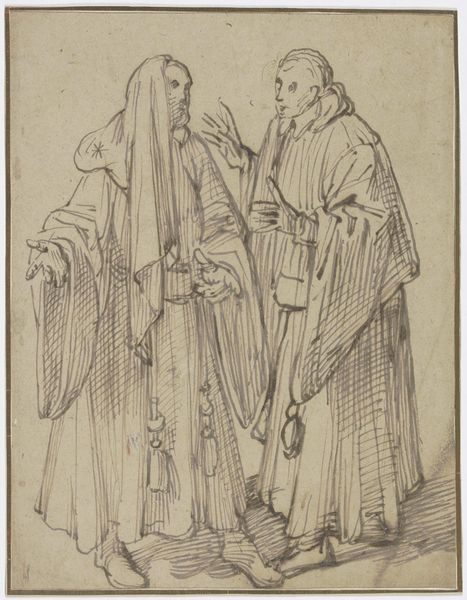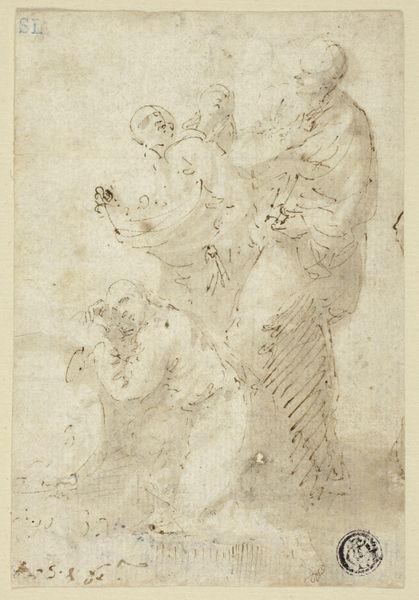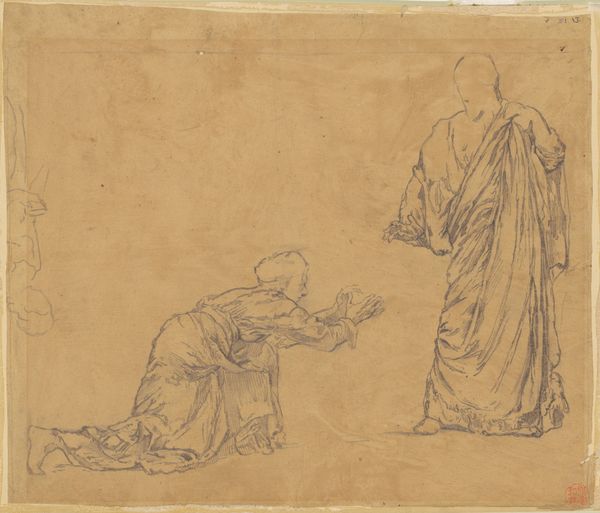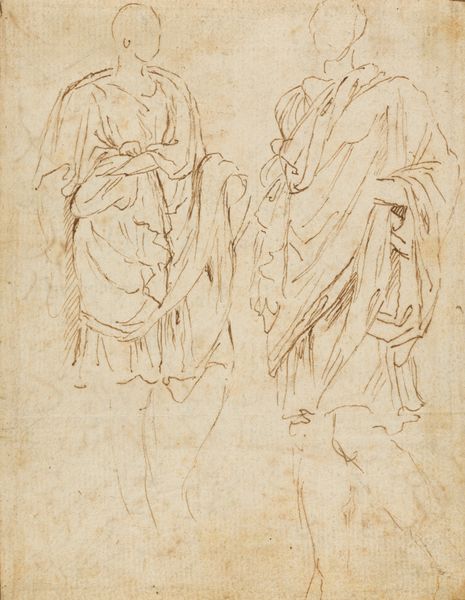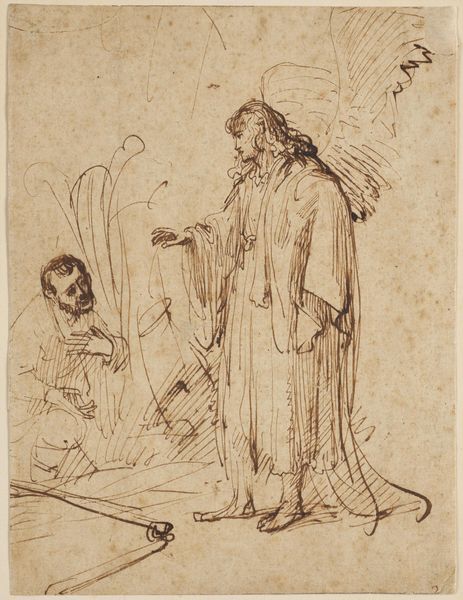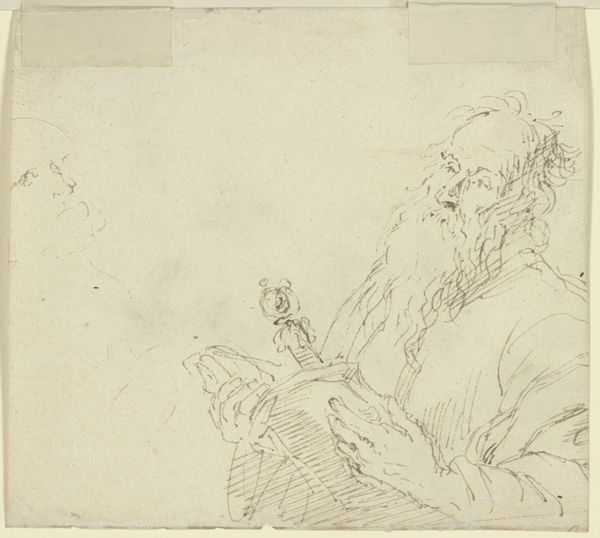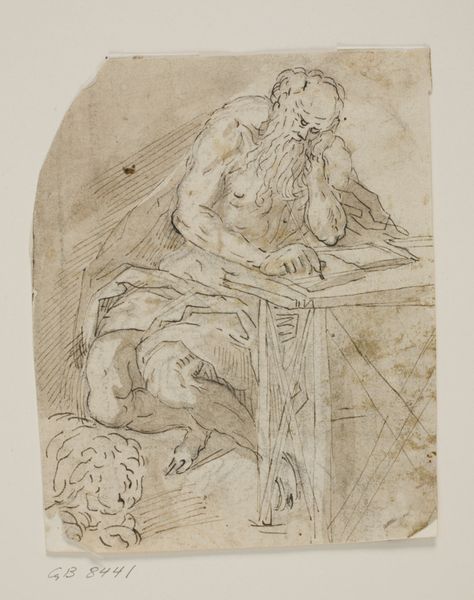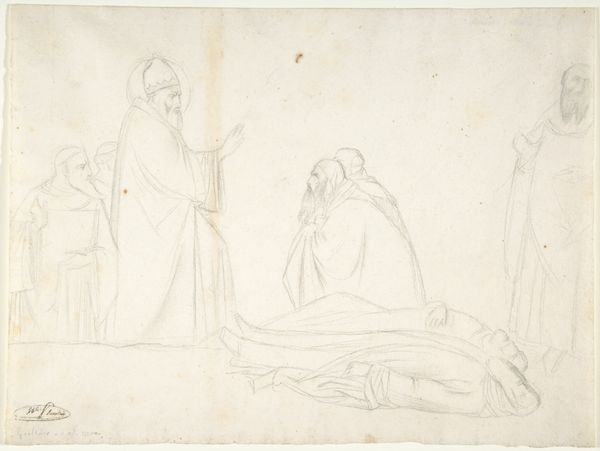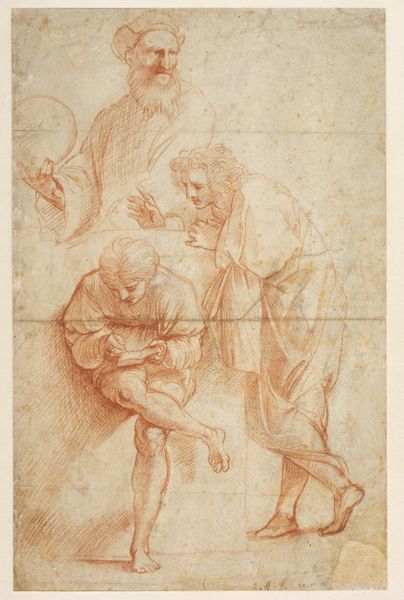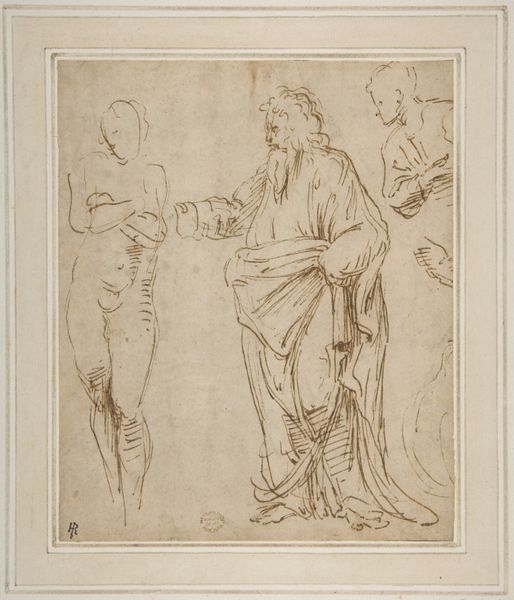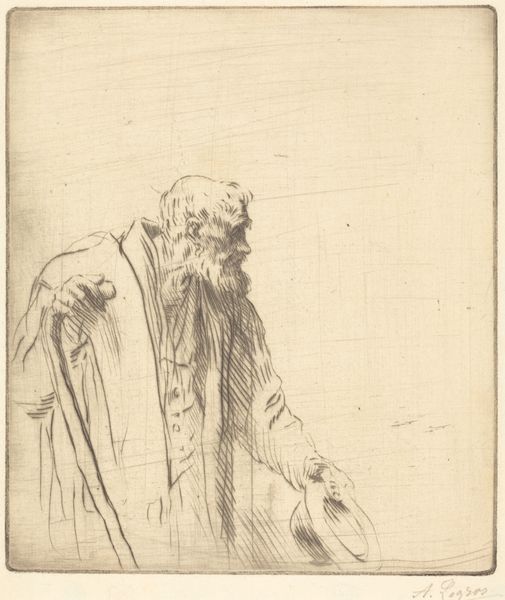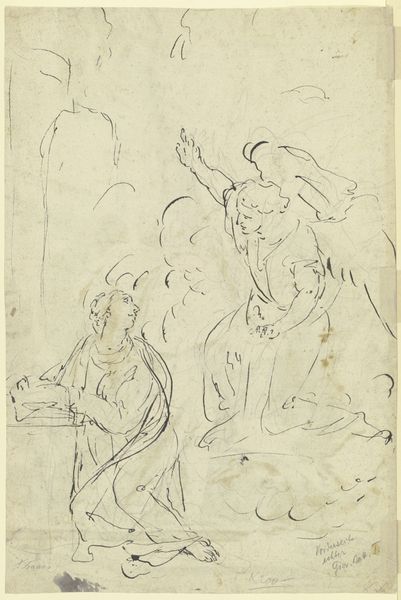
Three Standing Figures (recto); Seated Woman and a Male Hermit in Half-length (verso) 1435 - 1438
0:00
0:00
drawing, paper, ink
#
portrait
#
drawing
#
medieval
#
figuration
#
paper
#
ink
#
italian-renaissance
Dimensions: 11 13/16 x 8 13/16in. (30 x 22.4cm)
Copyright: Public Domain
Curator: This intriguing drawing, “Three Standing Figures (recto); Seated Woman and a Male Hermit in Half-length (verso)” is attributed to Stefano da Verona and dates back to the years 1435 to 1438. Crafted with ink on paper, it’s currently housed here at the Metropolitan Museum of Art. Editor: The initial impression is one of contemplative isolation. There is something both delicate and somber about the wispy lines and the quiet postures of the figures. I immediately find myself considering how these depictions might challenge conventional Renaissance notions of gendered humility. Curator: Precisely. Note how Stefano's deliberate portrayal invites an exploration of societal roles. We can view the figures not just as individuals but as representative of broader societal narratives and hierarchical structures present in 15th-century Italy. How might their physical bearing reveal the complex negotiation of identity in a heavily patriarchal society? Editor: Right, and consider the paper itself. Paper in the 15th century was becoming more available, yes, but the act of drawing with ink would have required a mastery of craft. What stories are embedded in the production of the support for the work as well as the tools for producing it? The scarcity of the paper gives a certain value to the drawing itself, regardless of subject matter. Curator: Absolutely, this impacts how the drawing would be viewed in its own time. Furthermore, the apparent vulnerability and tenderness of these individuals contrasts sharply with expectations surrounding depictions of women and hermits in the early Renaissance. Consider that the woman depicted, gazing toward something we can not see, could represent a new kind of subject that challenges rigid gender roles and embraces female interiority. Editor: Interesting thought. What really gets me thinking is how the figures' robes and clothing are represented by such thin, close line work. What processes informed the decision to foreground line, an agent of division, over modeling, a process more capable of unified tonal masses? I feel it challenges some modern views about value. Curator: It is truly remarkable how much discourse emerges from one single sheet. This detailed examination invites critical reassessment of prevailing notions. We can no longer ignore the rich tapestries of cultural and historical intersections in artworks. Editor: The intersection between means, labor, and material creates new avenues of thought about a society so far away. The piece is simple in its way, but a strong reflection of our moment, too.
Comments
No comments
Be the first to comment and join the conversation on the ultimate creative platform.
